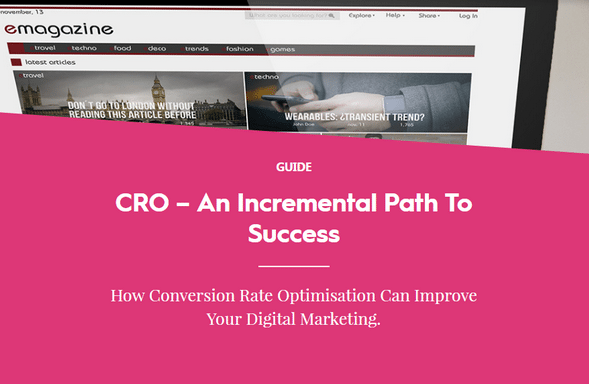The main purpose of an e-commerce website is to sell products. That may seem like an obvious place to start, but stick with me! Your site may be working reasonably well and may already be boasting a strong conversion rate, but there is always room for improvement. Conversion rate optimisation often results in more sales and more revenue.
What is Conversion Rate Optimisation?
What a good question! Conversion rate optimisation (CRO) is the practice of identifying and introducing minor changes to your website, which directly impact the percentage of conversions you generate.
You’re probably thinking “I could achieve more sales and revenue by driving more traffic to the website though”, but you would be slightly wrong. While you could increase the number of transactions that you achieve by driving traffic more to the site, you may not increase the percentage of your users who convert – in fact, it will likely drop.
Conversion Rate Optimisation Strategies
There are several ways to optimise and improve your websites conversion rate, but we’ll stick with the methods which can be applied with very little expert knowledge. The easiest place to start is to look at the data you already have, so let’s talk about the Goal Funnel in Google Analytics.
Google Analytics Goal Funnel
If you think of your website as a physical shop, the role of the goal funnel makes a lot of sense:
- You walk to the correct aisle.
- You browse the products that are available.
- You put the product in your basket/trolley.
- You walk to the checkout.
- You pay for your items and leave the shop.
It’s the same idea when looking at the goal funnel for your website, and you’ll be able to see exactly at which point in your sales or checkout process most users are dropping out. This then enables you to hypothesise reasons for this, for instance:
- Are you seeing a large number of drop-offs at a certain point? There could be something wrong with that stage in your checkout, or perhaps something that your customers don’t like or find untrustworthy about your site?
- Is your conversion rate generally low? Maybe your products aren’t signposted well enough.
- Are there lots of steps in your checkout process? Are there lots of unnecessary form fields? Consider simplifying it to see if this helps to increase conversion rate.
The goal funnel is a therefore a great place to start identifying any issues or gaps in your checkout process that could be fixed or modified in order to increase your conversion rate.
Cart Abandonment
There are a number of ways to deal with shopping cart abandonment issues, but perhaps the easiest to set up is email marketing. If you’re using a common e-commerce framework (such as WooCommerce) and a common email service provider (such as MailChimp), this can be relatively simple to set up.
All you’ll need to do is connect your store to your email marketing solution, put together your reminder email using the provided merge tags, set up the rules for the message being sent (such as “after the item has been in the cart for 30+ days”) and then activate. Hey presto! Any customers who add things to their cart and then don’t checkout will be reminded that they didn’t complete their purchase.
This method does rely on you already having the email address for your customer, which you may have captured when they set up an account, but is generally a relatively low cost solution.
Test, test, test!
This is by far the most important point in this article. Every slight change you make to your website will have an effect, but prior to testing you can’t be sure whether the effect will be positive or negative.
The best method for approaching CRO is to run A/B tests on a small portion of your visitors, and then use this data to make an informed decision. Be careful not to make too many changes to one A/B test though, as you want to know exactly what’s caused the change in conversion rate.
Once you have enough data to hypothesise that a particular change will be more beneficial than the original, than you can roll it out across you site. Be sure to carry out multiple tests before implementing though.
Then it’s just a case of making sure that your change has worked and then going back to the beginning to identify the next possible optimisation!
If this article has caught your attention, but you’re not really sure where to start with this process, or are worried about negatively affecting your conversion rate, then why not get in touch with the team at Coast Digital?
If you’d like to read more about CRO first, we have a free to download guide on the topic: Conversion Rate Optimisation (CRO) – An Incremental Path To Success

